WDM Ring – Wavelength Independent Subscriber Equipment
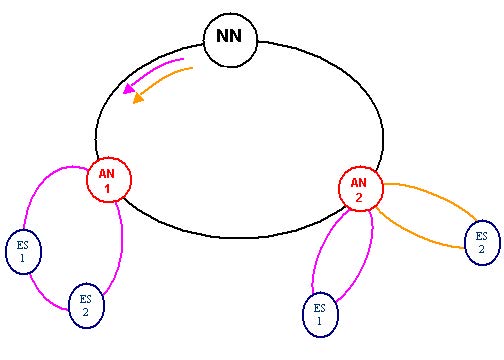
In this example, we will show realization of a WDM ring network using wavelength independent subscriber equipment to share bandwidth [1]. The metro-ring network we modeled operates with 2 wavelength carriers as shown in Figure 1. In this configuration, several subscribers share the bandwidth. For illustration purposes, the network contains one Network Node (NN) and…
Digital Modulation – DPSK
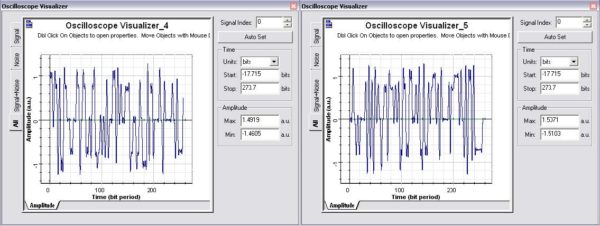
The purpose of this lesson is to demonstrate how to design an 8 DPSK pulse generator using the OptiSystem component library. This tutorial includes references to project files that demonstrate some of the steps presented here. Refer to the end of the tutorial for the project file names. You should use the OptiSystem Component Library…
Digital modulation – OQPSK
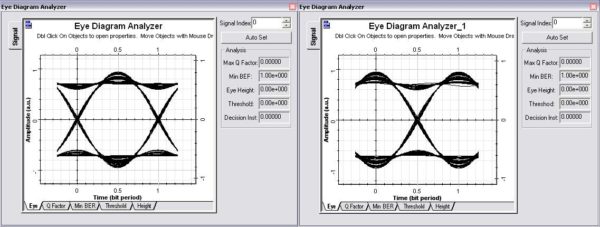
The OQPSK modulation is a PSK modulation, using 2 bits per symbol and a delay of one bit in the in quadrature signal (refer to OptiSystem component library, OQPSK Pulse Generator). The project file “OQPSK – Transmitter and Receiver.osd” has an OQPSK transmitter and receiver (Figure 1).
Digital modulation – QAM
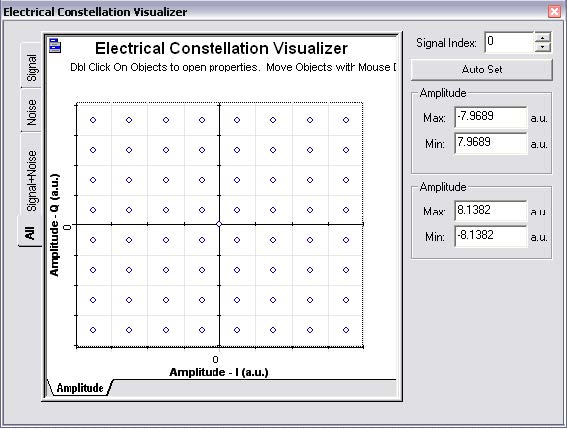
Introduction The QAM modulation is typically used in CATV system for cable modem transmission. The project file The project file “QAM – Transmitter and Receiver.osd” has an QAM transmitter and receiver (Figure 1) using a 64 QAM transmission (6 bits per symbol). Figure 1: 64 QAM System The main difference from the DPSK project is…
Manchester and PAM Coding/Decoding
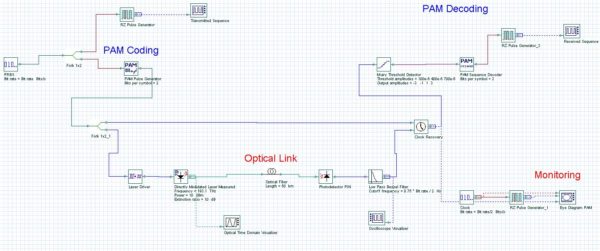
A Manchester encoded signal contains frequent level transitions which allow the receiver to extract the clock signal and correctly decode the value and timing of each bit. To allow reliable operation, the transmitted bit stream must contain a high density of bit transitions. Manchester encoding ensures this, allowing the receiving to correctly extract the clock…
Using OptiSystem to analyze CATV systems
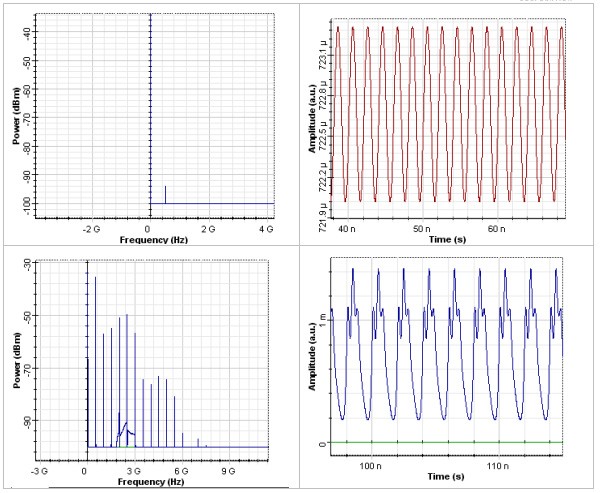
The aim of this material is to show the possibilities of using OptiSystem to analyze CATV systems.
In Part I, we demonstrate the basic nonlinear distortions that result from the propagation of the multiple carrier frequencies through a laser diode.
Observation of harmonic and intermodal products is presented. Although the appearance of the nonlinear distortions is a deterministic process, it is considered to contribute to the laser noise.
Differential Mode Delay and Modal Bandwidth
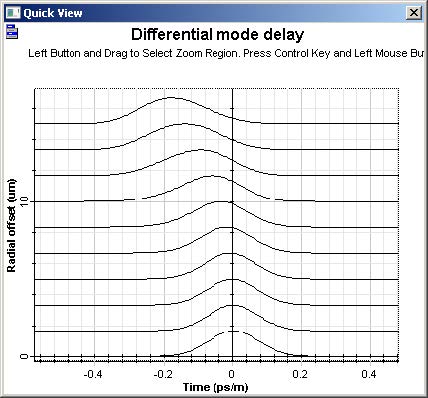
For the differential mode delay measurement (DMD), an 850 nm probe is scanned at small radial increments across the core of the multimode fiber under test.
At each position the temporal response to a short impulse is recorded. After removal of the reference pulse temporal width, the DMD temporal width is determined at the 25% threshold level between the first leading edge and the last trailing edge of all traces encompassed between specified radial positions.
Encircled Flux

Encircled flux, as the name implies, describes the flux encircled within a circular radius inside the fiber.
Encircled flux is often quantified as the radius from the center of the fiber required to encircle 25% and 75% of the light energy through the fiber.
The power distribution of a fiber described by the encircled flux value is a crucial factor in ensuring the required data transmission rate in Gigabit Ethernet systems.
Matlab Cosimulation
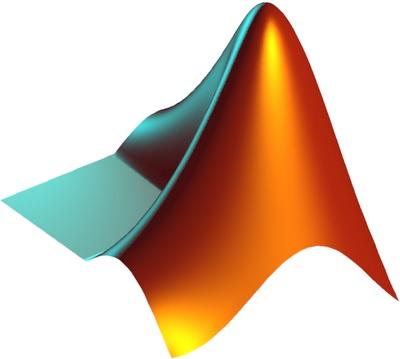
BER Analysis Using Matlab®/OptiSystem Automation This example demonstrates the use of Matlab® software to call OptiSystem and calculate the bit error rate after the OptiSystem simulation. Samples: MatlabOptiSysBER.m OpticalLinkProject.osd The Matlab file “MatlabOptiSysBER.m” executes the following functions: Generates the data (sequences of bits) that are transmitted through OptiSystem; Opens OptiSystem; Load file OpticalLinkProject.osd that has…
OptiSPICE Netlist Component
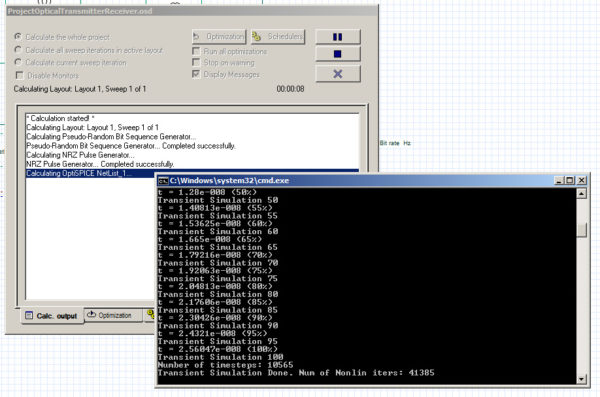
This lesson describes how to create a transmitter using an external modulated laser. You will become familiar with the Component Library, the Main layout, component parameters, and visualizers.
OptiSystem Lab Assignments

We are pleased to provide educators with free lab assignments which can be easily integrated into the curriculum of varied optical communications courses. Our staff will continually add new lessons in the near future, and we also welcome your contributions or suggestions to the community forum.
OptiSystem – Hot Topics

Optiwave now offers ‘hot topic’ examples for you to download and use with your evaluation or purchased copy of OptiSystem.
OptiSystem Overview
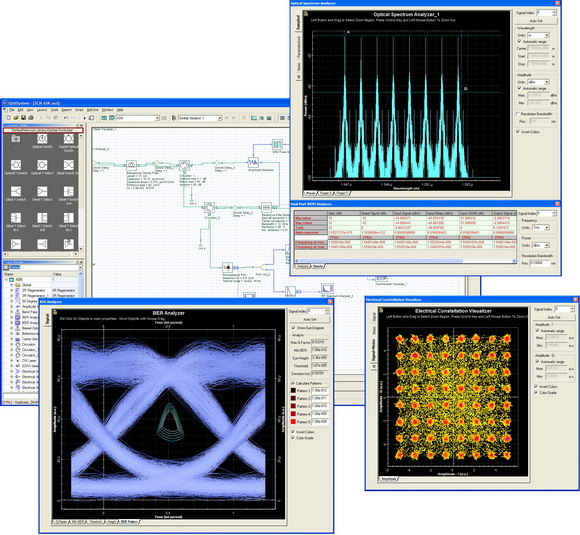
OptiSystem is a comprehensive software design suite that enables users to plan, test, and simulate optical links in the transmission layer of modern optical networks.
OptiSystem Publication References – 2012

Listing of scientific papers, technical journals, periodicals, and conference publications which reference the use of OptiSystem.
OptiSystem Publication References – 2011

Listing of scientific papers, technical journals, periodicals, and conference publications which reference the use of OptiSystem.

